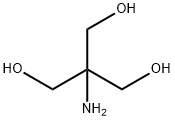2-Ethylhexylamine
- CAS NO.:104-75-6
- Empirical Formula: C8H19N
- Molecular Weight: 129.24
- MDL number: MFCD00008148
- EINECS: 203-233-8
- SAFETY DATA SHEET (SDS)
- Update Date: 2024-12-18 14:15:32

What is 2-Ethylhexylamine?
Chemical properties
colourless liquid
Chemical properties
2-Ethylhexylamine is a corrosive liquid.
The Uses of 2-Ethylhexylamine
2-Ethylhexylamine is used in organic syntheses.
The Uses of 2-Ethylhexylamine
Synthesis of detergents, rubber chemicals, oil additives, and insecticides.
The Uses of 2-Ethylhexylamine
2-Ethylhexylamine is used to make pharmaceuticals and other chemicals. It is used as beam material and surface active agent. It also involves in synthesis of aliphatic amines.
General Description
A water-white liquid with a fishlike odor. Less dense than water. Flash point 140°F. Extremely irritating to skin and eyes. Vapors heavier than air. Used to make pharmaceuticals and other chemicals.
Air & Water Reactions
Flammable. Soluble in water. Sensitive to prolonged exposure to air.
Reactivity Profile
2-Ethylhexylamine reacts with oxidizing materials . Neutralizes acids in exothermic reactions to form salts plus water. May be incompatible with isocyanates, halogenated organics, peroxides, phenols (acidic), epoxides, anhydrides, and acid halides. Flammable gaseous hydrogen may be generated in combination with strong reducing agents, such as hydrides.
Hazard
Moderate fire risk. Toxic by ingestion and inhalation.
Health Hazard
INHALATION: High concentration of vapor will produce irritation of the respiratory tract and the lungs. Prolonged exposure may cause systemic effects. EYES: Contact with liquid may result in severe eye irritation. Exposure to concentrated vapor may result in corneal edema. SKIN: Contact with liquid may result in severe skin irritation, burns and possible skin absorption. INGESTION: May cause systemic poisoning.
Flammability and Explosibility
Flammable
Safety Profile
Poison by intraperitoneal route. Moderately toxic by ingestion, inhalation, and skin contact. Corrosive. A severe skin and eye irritant.Flammable liquid when exposed to heat or flame; can react with oxidizing materials. To fight fire, use alcohol foam, CO2, dry chemical. When heated to decomposition it emits toxic fumes of NOx. See also AMINES.
Properties of 2-Ethylhexylamine
| Melting point: | -76 °C |
| Boiling point: | 169 °C(lit.) |
| Density | 0.789 g/mL at 25 °C(lit.) |
| vapor pressure | 1.2 mm Hg ( 20 °C) |
| refractive index | n |
| Flash point: | 126 °F |
| storage temp. | Flammables area |
| solubility | 1.6g/l |
| form | Liquid |
| pka | 10.75±0.10(Predicted) |
| color | Clear colorless |
| explosive limit | 1.6-7.7%(V) |
| Water Solubility | 2.5 g/L (20 ºC) |
| Sensitive | Air Sensitive |
| BRN | 1209249 |
| Stability: | Stable. Combustible. Incompatible with strong oxidizing agents. |
| CAS DataBase Reference | 104-75-6(CAS DataBase Reference) |
| NIST Chemistry Reference | 1-Hexanamine, 2-ethyl-(104-75-6) |
| EPA Substance Registry System | 2-Ethylhexylamine (104-75-6) |
Safety information for 2-Ethylhexylamine
| Signal word | Danger |
| Pictogram(s) |
 Flame Flammables GHS02  Corrosion Corrosives GHS05  Skull and Crossbones Acute Toxicity GHS06 |
| GHS Hazard Statements |
H226:Flammable liquids H302:Acute toxicity,oral H311:Acute toxicity,dermal H314:Skin corrosion/irritation H330:Acute toxicity,inhalation |
| Precautionary Statement Codes |
P210:Keep away from heat/sparks/open flames/hot surfaces. — No smoking. P280:Wear protective gloves/protective clothing/eye protection/face protection. P303+P361+P353:IF ON SKIN (or hair): Remove/Take off Immediately all contaminated clothing. Rinse SKIN with water/shower. |
Computed Descriptors for 2-Ethylhexylamine
New Products
Tert-butyl bis(2-chloroethyl)carbamate 4-Methylphenylacetic acid N-Boc-D-alaninol N-BOC-D/L-ALANINOL 3-Morpholino-1-(4-nitrophenyl)-5,6-dihydropyridin- 2(1H)-one Furan-2,5-Dicarboxylic Acid Tropic acid DIETHYL AMINOMALONATE HYDROCHLORIDE 1,1’-CARBONYLDIIMIDAZOLE R-2-BENZYLOXY PROPIONIC ACID 1,1’-CARBONYLDI (1,2-4 TRIAZOLE) N-METHYL INDAZOLE-3-CARBOXYLIC ACID (2-Hydroxyphenyl)acetonitrile 4-Bromopyrazole 5-BROMO-2CYANO PYRIDINE 5,6-Dimethoxyindanone 5-broMo-2-chloro-N-cyclopentylpyriMidin-4-aMine 2-(Cyanocyclohexyl)acetic acid 4-methoxy-3,5-dinitropyridine 2-aminopropyl benzoate hydrochloride 1-(4-(aminomethyl)benzyl)urea hydrochloride diethyl 2-(2-((tertbutoxycarbonyl)amino) ethyl)malonate tert-butyl 4- (ureidomethyl)benzylcarbamate Ethyl-2-chloro((4-methoxyphenyl)hydrazono)acetateRelated products of tetrahydrofuran








You may like
-
 2-Ethyl-1-hexylamine, 98% CAS 104-75-6View Details
2-Ethyl-1-hexylamine, 98% CAS 104-75-6View Details
104-75-6 -
 2-Ethylhexylamine CAS 104-75-6View Details
2-Ethylhexylamine CAS 104-75-6View Details
104-75-6 -
 2-Ethylhexylamine CASView Details
2-Ethylhexylamine CASView Details -
 2-Ethyl-1-hexylamine CAS 104-75-6View Details
2-Ethyl-1-hexylamine CAS 104-75-6View Details
104-75-6 -
 1975-50-4 98%View Details
1975-50-4 98%View Details
1975-50-4 -
 14714-50-2 (2-Hydroxyphenyl)acetonitrile 98+View Details
14714-50-2 (2-Hydroxyphenyl)acetonitrile 98+View Details
14714-50-2 -
 118753-70-1 98+View Details
118753-70-1 98+View Details
118753-70-1 -
 733039-20-8 5-broMo-2-chloro-N-cyclopentylpyriMidin-4-aMine 98+View Details
733039-20-8 5-broMo-2-chloro-N-cyclopentylpyriMidin-4-aMine 98+View Details
733039-20-8